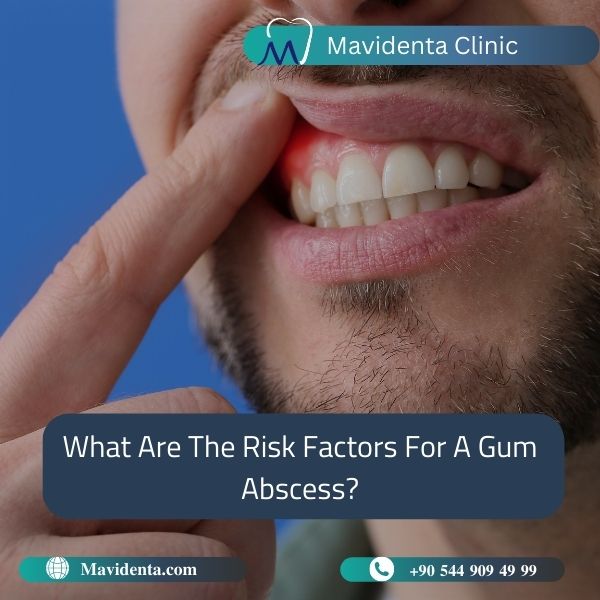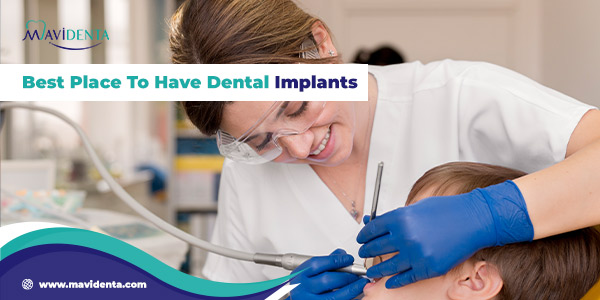Are you suffering from lateral periodontal abscess? Do you have symptoms? Do you know the cause? You should undergo lateral periodontal abscess treatment.
Keep on reading this article to know all you need!
Initially, we are identifying periodontal abscess.
What is a periodontal abscess?
A periodontal abscess is defined as a localized collection of pus within the gingival wall of a periodontal pocket. It develops quickly, destroying periodontal tissues, and manifests clear symptoms. It is more common in patients with prior periodontal pockets.
But if you visit a dentist, you will respond well to the lateral periodontal abscess treatment.
What does a periodontal abscess look like
A periodontal abscess appears as a swelling in the gum tissue, often near the root of the tooth. The swelling may be red, inflamed, and painful to the touch. In some cases, a visible pus-filled pocket may be present.
Get Professional Periodontal Treatment In Turkey
How is a periodontal abscess diagnosed?
The oral examination (pocket depth, swelling, suppuration, mobility, and tooth sensitivity) and medical and dental history are used to diagnose a periodontal abscess.
Before diagnosis what do you feel? Let us tell you!
What are the symptoms of lateral periodontal abscess?
Pain is the main symptoms of lateral periodontal abscess but there are additional warning signs:
- Pressure and pain that worsen when you lie down.
- Increased sensitivity to hot and cold food and drink.
- Breath that is unpleasant.
- When chewed, a foul-smelling liquid erupts, providing temporary pain relief.
- Difficulty in swallowing.
- A general malaise, or simply feeling “off” or ill.
- Fever
- Spreading discomfort to the neck, jaw, or ear.
Therefore, you should hurry in the lateral periodontal abscess treatment.
Periodontal abscesses can occasionally make it difficult to breathe. It’s crucial to see a doctor right away at this point.
Initially, a dental abscess may not hurt at all, and as it continues to swell and burst, the pain may come and go. The affected tooth may be pain-free for a short while before slowly building pressure and pain in the patient.
Lateral periodontal abscess treatment procedures

There are some steps for the treatment of lateral periodontal abscess:
– Draining of abscess
To remove all of the pus and infected material from the abscess, your dentist will drain it.
Following that, they will thoroughly rinse the injured area with saline solution.
– Treatment of root canal
The tooth may require root canal therapy if a periodontal abscess infects it and spreads to a tooth.
Any affected bone that cannot be saved as well as all of the dead or damaged tissue will be removed by your dentist using a drill. The tooth will subsequently be filled and sealed.
– Tooth Extraction
Your dentist might advise having an infected tooth extracted in severe condition. Your dentist will discuss replacement options with you if a tooth extraction is necessary.
– Treatment of gum disease
Your dentist might advise either gum surgery or scaling and root planing (deep dental cleaning) to get rid of the infection.
– Antibiotics
Your dentist might advise a course of antibiotics in addition to cleaning the infected area to lower your risk of re-infection.
Next, let us illustrate to you the reasons for a lateral periodontal abscess.
What causes a lateral periodontal abscess?
Opportunistic infections include periodontal abscesses. Millions of bacteria can be found in even healthy mouths. This bacterium can cause infections, but it needs a place to go. Small cracks in the teeth are the most convenient entry point for bacteria.
There are numerous factors that can lead to these cracks, such as:
- Teeth clenching and grinding can wear down the enamel on the teeth and lead to cracks.
- Trauma: A dental injury may leave cracks or other openings that could allow bacteria to enter the tooth.
- Previous dental work: Periodontal abscess is more likely to develop on teeth that have previously had cavities filled or treated with a dental restoration like a crown.
A major risk factor for periodontal abscess continues to be poor dental hygiene. Bacteria can accumulate on teeth if brushing and flossing are neglected. More bacteria equal more potential for infection.
A diet that is high in sugar, acid, and fat is another risk factor. Sugar, acid, and fat are the three main food sources for the bacteria that causes tooth decay. Giving it a lot of soda, sweets, and processed food will only make it more difficult to get rid of bacteria with brushing and flossing and slow lateral periodontal abscess treatment.
Now, we are going to talk about gum abscess, its symptoms and treatment.
What is a gum abscess?
Abscesses are pockets of pus in various parts of the body, including inside the mouth. Some people experience an abscess on a tooth that affects the area around the tooth. However, sometimes abscess can develop on the gums.
What are the symptoms of a gum abscess?
Some mouth and gum conditions can develop slowly and show few symptoms before becoming more serious. A gum abscess is an exception to this rule.
These abscesses can result in excruciating pain that lasts for days or weeks in the affected area. The area may also appear swollen and redness if you open your mouth and observe it. The following are additional indications of a gum abscess:
- Food and drink intolerance to cold or heat
- Difficulty chewing
- A chipped tooth
- Bad mouth taste (caused by pus discharge).
- Pus dripping out
- Fever
How do you treat a gum periodontal abscess?
Remember that a gum abscess won’t fully recover on its own. Before beginning treatment, it’s crucial that you visit a dentist.
Draining the gum abscess and removing any debris from your periodontal pocket are the two steps in treating a gum abscess. A deep cleaning procedure known as scaling and root planning may be recommended by your dentist. Plaque and tartar from both above and below the gum line are removed during this procedure.
If you notice any abscess in your mouth, you should visit the dentist for gum or lateral periodontal abscess treatment.
Doctors can use dental x-rays to determine if a gum abscess is causing bone loss. Depending on the degree of bone loss, the dentist may decide to extract the tooth. They may also recommend treatments to regenerate lost bone and gum tissue.
The pulp, which is in the center of the tooth, can occasionally be impacted by a gum abscess. The pulp consists of blood vessels, nerves, and connective tissue. If the pulp is impacted, you might require a root canal to remove the tooth’s compromised area.
Your dentist might advise a course of antibiotics in addition to these dental treatments to get rid of and treat infection. If your dentist is unable to completely drain the abscess, antibiotics may reduce swelling. This medicine can also stop the infection from returning and from spreading to other parts of your body. Your dentist may recommend painkillers if you are in pain.
Therefore, could you know the risk factors for a gum abscess? Let’s see!
Inadequate oral care. The biggest risk factor is this one. Your gums will turn red and swollen if you don’t routinely remove plaque and tartar from your teeth.
A high-sugar diet. Your risk of developing cavities and gum disease rises when you consume sugary foods and beverages.
Finally, we are going to mention some complications of a periodontal abscess.
What are the risk factors for a gum abscess?

The risk factors for a gum abscess include poor dental hygiene, smoking, uncontrolled diabetes, a weakened immune system, gum disease, tooth decay, and dental trauma. Additionally, people who have a habit of clenching or grinding their teeth are at a higher risk of developing gum abscesses, as this can cause damage to the teeth and gums. It is important to maintain good oral hygiene practices and seek dental care promptly if you notice any symptoms of a gum abscess to prevent complications and further damage.
What are the complications of a periodontal abscess?
Do not ignore gum abscesses. If left untreated, the infection can spread deep into the gum tissue and affect surrounding teeth and bone. This causes more pain and swelling and can spread the infection to your face and other parts of your body.
Therefore, you should be concerned about any gum or lateral periodontal abscess treatment.
Our patients highly recommend Mavidenta clinic, the High quality Dental clinic in Istanbul. Our clinic with over twenty years’ experience and our team is very professional and can help you at any time.
To conclude, periodontal abscess is not serious if you visit your dentist immediately for treatment. but if you are late, it may lead to severe complications.
FAQ
What antibiotics are used for lateral periodontal abscess?
The preferred medications are antibiotics like Clindamycin, Metronidazole, Tetracyclines, and Penicillin.
How long is treatment for periodontal abscess?
When drainage is not an option, when there are indications of systemic involvement or when the patient is immunocompromised, antibiotics are advised. The recommended course of therapy is seven days.
What is the best anti-inflammatory for gum abscess?
The recommended pain reliever for dental abscesses is ibuprofen, but paracetamol can be used instead of it if you are unable to take it due to health concerns.






